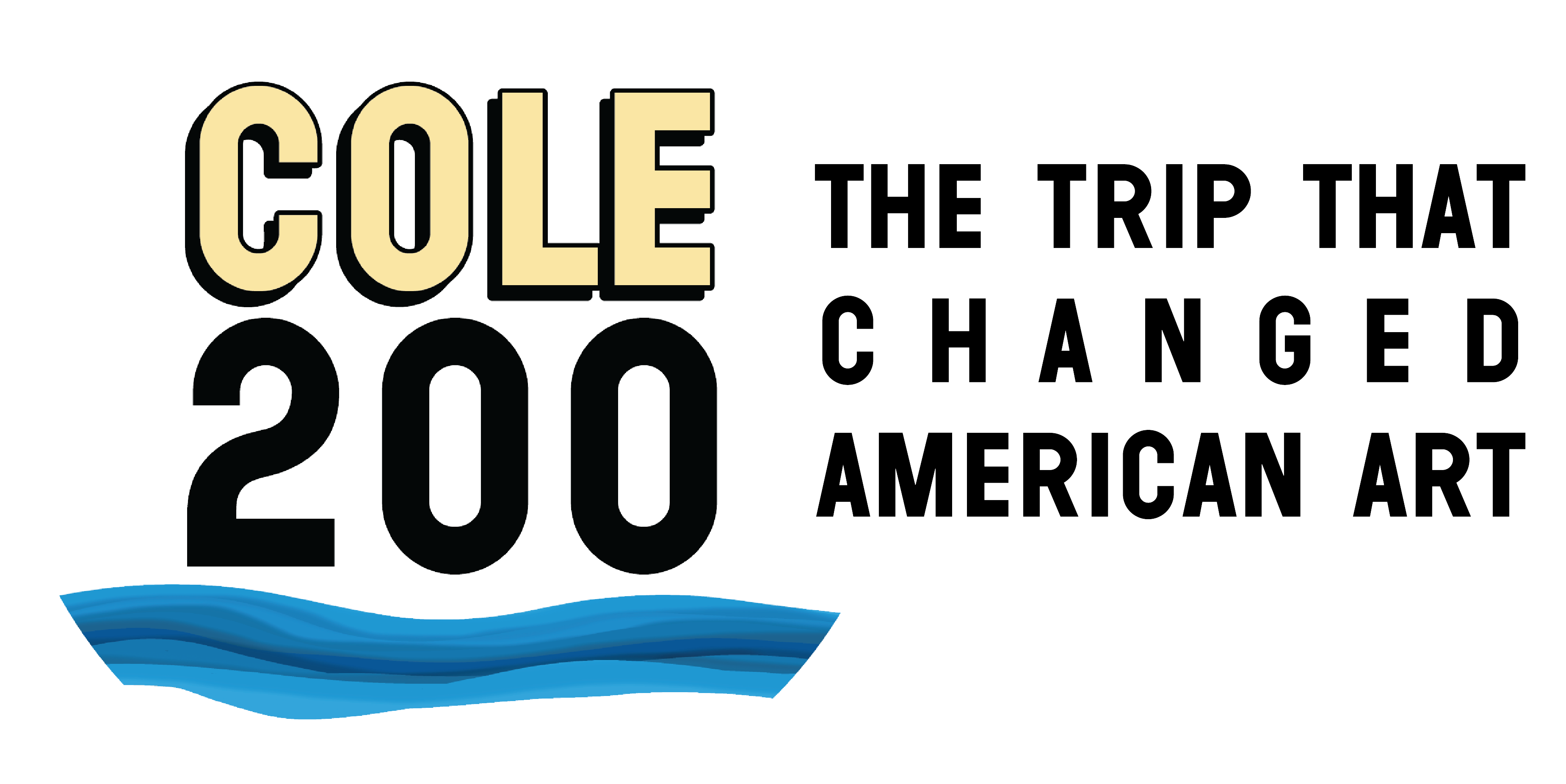Transcription of the Pollinator Pavilion Audio Feature with the artists Mark Dion and Dana Sherwood. The audio is available at thomascole.org/pollinatorpavilion.
MARK DION on “The Pollinator Pavilion”
Dana and I were both very excited to have the opportunity to work at the Thomas Cole House for the [Cross Pollination] exhibition. The idea of cross-pollination is something we are very excited about. We knew very well the work of Martin Johnson Heade and the hummingbird and orchid paintings. We worked in the form of follies. We both worked and produced art that has the interaction of humans and animals, so this was the perfect kind of collaboration for us, the perfect direction for us to move in. And of course, we live very close to Catskill, so it was in many ways an ideal situation.
We thought very much about the paintings of Heade, which are just marvelous. They are just so incredibly beautiful. We thought, the only thing equally marvelous, or more marvelous, than a Heade hummingbird painting is a hummingbird itself. We wanted to construct a situation in which the viewer has an opportunity to encounter hummingbirds to actually be in a place that is shared with hummingbirds. We chose a very strange architectural mélange for the design of the gazebo, and that has a lot to do with thinking about the fantastical aspects that we see in Thomas Cole’s paintings, especially in relationship to architecture. In works like The Architect’s Dream or other pieces in which he is creating a sense of the sublime and the fantastic through his architectural representations, we want to in some way to reflect on Cole’s architectural fantasies.
DANA SHERWOOD on “The Pollinator Pavilion”
It’s no wonder that the Hudson Valley has been a draw for artists since the time of Thomas Cole. The majesty and sublime nature that surrounds the area at his time and in ours still today is full of wonder. Mark and I really wanted to capture the sense of wonder and the magical aspects of being in nature. Besides being able to go and take a walk in the forest or walk along the Hudson River here, we wanted to bring these incredible specimens that we have right here in the area, such as the hummingbird, and bring it right into the experience of the artwork where the viewer can be part of that.
While we were making this work, we had started collecting a lot of the plants that attract pollinator species, and we had filled them in our garden here in Copake. It was just incredible to go out there every morning at dawn and see the vast array and number of pollinator species, like bees, different butterflies, and in particular the hummingbirds, which of course you hear before you actually see. There is nothing like that moment of awe when you actually see them whiz by. No matter how many times you have that experience, every single time, invokes that same marvelous joy.
I think it’s worth noting that even though Mark and I have been working with nature and science for our entire careers, there’s an aspect of nurturing and growing and sustaining the natural environment, in particular the flora culture, where it brings it to entirely new level when you start thinking about sustaining the species of insect that actually make our ecosystem possible. A lot of them are virtually invisible, not to the naked eye, but as you walk through your garden, you may not notice all the insects fluttering about, and you may not recognize their significance. I know I knew this on a certain level, but there is something about bringing them into the garden and seeing how they really perform a crucial aspect to our natural ecosystem.
